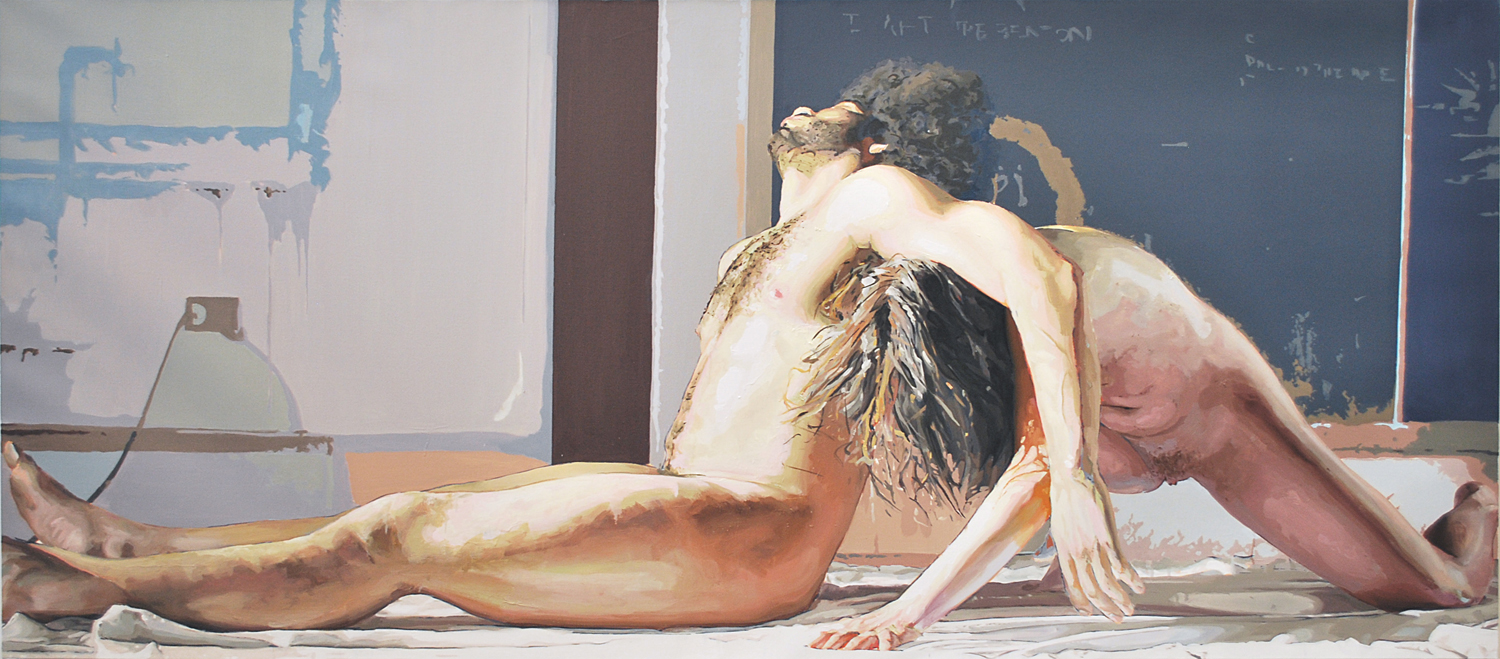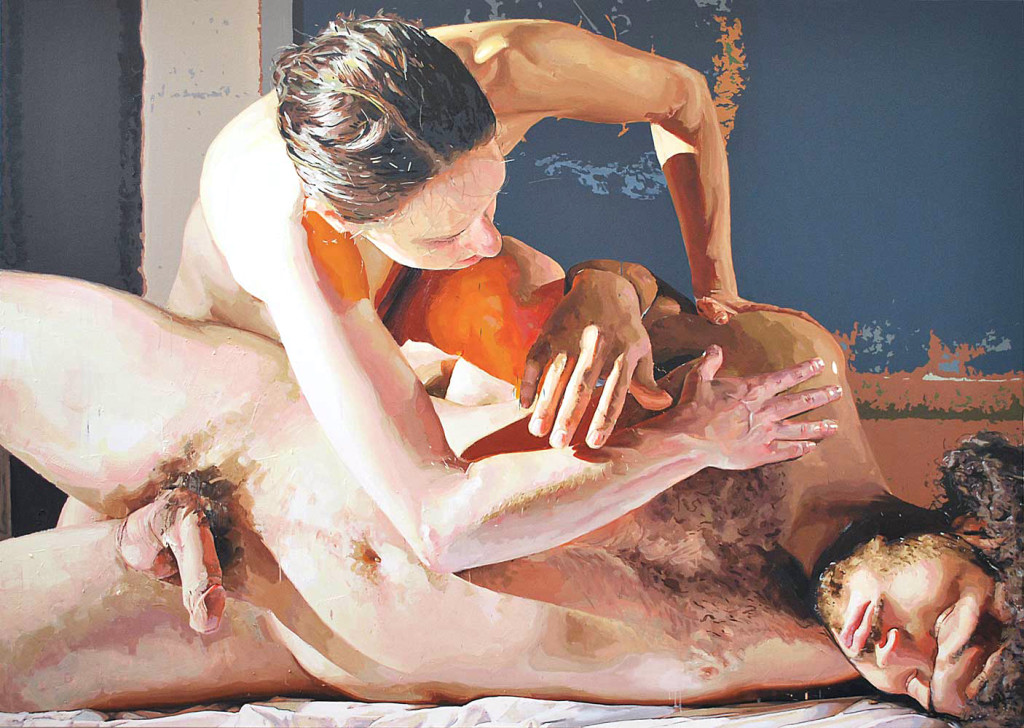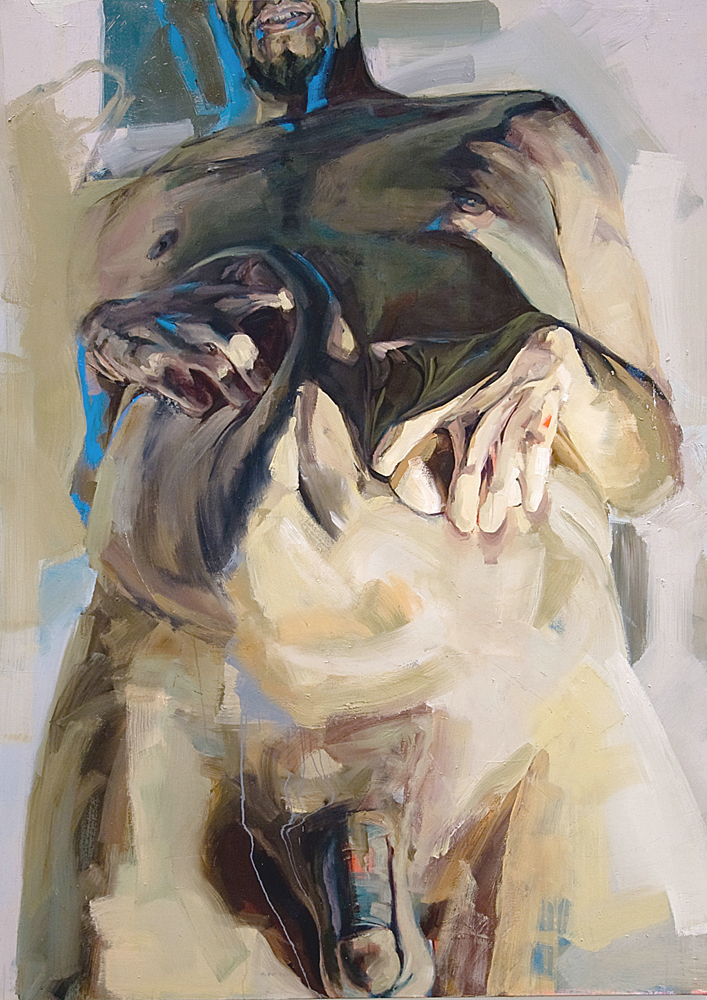BY DEANNA ELAINE PIOWATY
Combustus Magazine and I recently sat down for an interview. Read below or view original post.
IS THE IMPENETRABLE BLACK MALE A MODERN HEROIC MYTH? CONVERSATION WITH CHICAGO FIGURATIVE PAINTER PATRICK EARL HAMMIE
Patrick Earl Hammie’s paintings are immediate, courageous, authentic. From his interracial couples posed in a re-envisioned dance of intimacy, to his unidealized portraits of the Black male nude caught in moments of vulnerability, Patrick Earl Hammie challenges, subtly and sometimes not so subtly, what we think we know and what we have come to expect. And yet, there is also that feeling of recognition. Because who Hammie is ultimately capturing is us. Looking at Patrick Earl Hammie‘s work, it is we who at last feel seen.
Deanna Elaine Piowaty: Patrick, your work is at once thoughtful, exquisitely executed and yet also appears seemingly effortless. Would you say painting portraits comes easier for you than most, or are we enjoying the results of many failed attempts before you arrived at this lovely place?
Patrick Earl Hammie: Those qualities you mentioned take many hours of work, introspection, an antagonistic spirit, and access to resources. Thank you for seeing them in my work, but for me, it’s an ongoing effort with many failed attempts. As cerebral as contemporary art can become, I equally love when artists, storytellers, and musicians tap into their personal experiences to make art that’s visceral and conscious. My ideas always start with my personal experiences, questions, struggles, and interests. Events like my father’s death when I was 17, singing John Rutter’s Requiem at Carnegie Hall in college, or witnessing a milestone in American presidential history all vibrate in my gut first, then my head. I strive to make work that engages people in that way.
DEP: As an artist, which is the more painful: to be unable at times to access that truly juicy stuff you are straining to reach, or the discomfort when you actually do reach the fire?
PEH: The former. I’m reaching for a reality where art patrons will consistently experience reflections of themselves in the bodies they encounter in public collections, and in the artists who represent them. Few examples of black and brown portraits made by artists of color have been collected by, or presented in, museums prior to the late 20th century. Presently, no artist of the African Diaspora is guaranteed a place in the grand narrative of Western Art wherein that chronicle could only be told through the inclusion of a black artist. I enter this discussion to keep a light on the roots of representation, and place fresh examples in spaces where they have been historically underrepresented.
DEP: Your latest series, “Significant Other,” opens multiple dialogs at once. We see an examination of the emotional dance of intimacy, the theme of interracial coupling, and then the fairly untouched subject of the Black male nude. Which of these (or others) was your initial point of entrance?
PEH: Historical representations of Otherness and recent shifts that locate women and people of color as central influencers of culture and politics inform my recent project, Significant Other. This series reorients inherited expectations and makes room for these bodies to develop new conceptions. It presents a female and a male figure locked in a physical dialogue, hefting weight, and relocating the perceptions of ruined and objectified bodies that recall and carry on complex legacies of suffering and struggle. Paintings such as Aureole feature a commanding woman rotating a reclined man’s body to his side, baring his nakedness and inspecting his state of consciousness. Constructing moments where traditionally masculine strengths (dominance) and traditionally feminine strengths (care and empathy) are conflated in the woman’s actions while the man’s body and signifier of power—the penis—is vulnerable to public critique, the paintings witness the woman as an active authority and the man relieved from macho performance. Drawing on the emotive qualities of Romanticist painting and its use of heroic proportions to engage with political and humanistic expression, I imagine bodies as occasions for us to encounter difference toward considering their capacity for establishing new accounts.
PEH: Reflections on my reaction to my father’s death influenced my early work and changed the way I think about manhood. In the wake of his death, I assumed an intractable façade of strength in order to protect myself from emotional vulnerability, and maintained this illusion for others. Later, I became curious about the source of those behaviors and art’s role in representing and culturing such masculine traits. My project Imperfect Colossi, a series of large-scale portraits, puts my un-idealized brown body in conversation with the idealized male form to present the masculine ideal as a work in progress, in a constant state of negotiation. Works in the series, such as Protuberance, portray a bulky male figure pulling and tugging at his loose flesh, flesh that flaps over and bunches up, the antithesis of the hard-bodied heroes of Old Master imagery. The paintings puncture the notion that a man should stand as a tower of unwavering strength.
DEP: How comfortable are we as a society with the Black male nude as the subject of art? What have you observed when others view your work for the first time?
PEH: We generally have a limited understanding of the black male nude as an artistic subject. In my practice, painting the figure entails encountering and interrogating the heroizing, idealizing tradition of the nude in Western Art in which black and brown bodies have been objectified and dehumanized. I’m part of a generation of artists picking up this mantel, locating ourselves as artists, models, and subjects, and working to remake what the nude does and how it produces meaning.
DEP: Should artists have a responsibility to their public? If so, would you say you feel this stronger than most simply for the fact that you are African-American?
PEH: I believe you have to earn your audience’s attention every time you make something. Whenever I come into the studio I endeavor to first clarify my idea, and then win the attention of multiple audiences.
DEP: Who or what inspires you?
PEH: It’s inspiring to see similar efforts emerging in other media, such as Steve McQueen’s film 12 Years a Slave (2013). As men of color, McQueen and I are working within visual media to present grand stories steeped in Western history, reframing and re-presenting a narrative that contests embedded assumptions about gendered and racial identity.
DEP: Where would you like to go next with your work?
PEH: Inspiration for my current project began in 2011 during my eight-week residency at the John Michael Kohler Arts Center. An award from the Alliance of Artist Communities in conjunction with the Joyce Foundation supported this residency, and allowed me time to investigate sculptural practices through the casting of calla lilies and my own body to reconsider the contemporary resonance of themes such as death, desire, and rebirth. Those experiences have informed my current practice by broadening my project to employ two-dimensional and three-dimensional production strategies. Exploring practices that prioritize space poses new challenges for me, and I’m excited to discover how I will negotiate that terrain.




